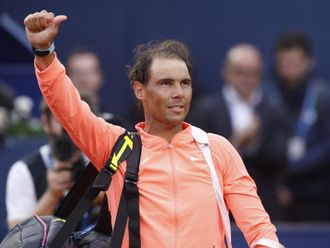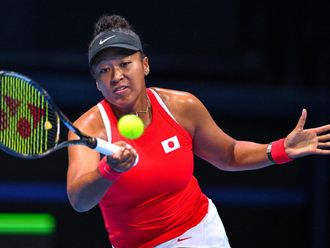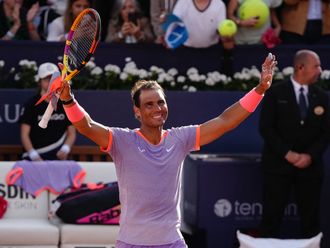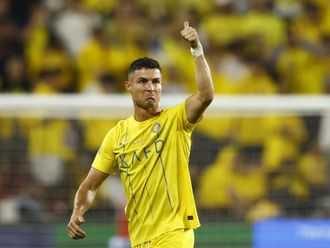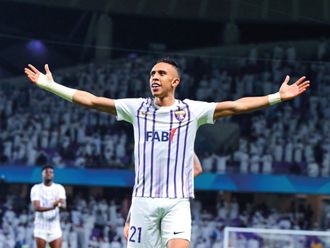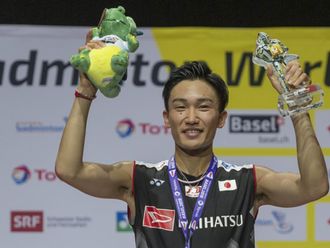
Melbourne, Australia: If talent and power were the only factors, this surely would have been the tennis era of the Big 5, not the Big 4.
Juan Martin del Potro had the weapons and the drive to knock down the clubhouse door and demand his place at the elegantly set table with Roger Federer, Rafael Nadal, Novak Djokovic and Andy Murray.
But for now, at age 26, ‘DelPo’, as tennis fans like to call him, remains a wonder with just one Grand Slam — secured in style way back at the 2009 US Open, when he came back on Roger Federer in a match that looked like a new paradigm but has turned out to be only a tease.
It may not be too late for more, but the odds are ever more against it. Del Potro’s wrists, it poignantly turns out, have not been nearly as sturdy as his booming strokes. And as he sat down low while surely also feeling low in the strangely configured Australian Open interview room last Sunday, it was hard not to feel wistful about all the big moments and big matches he and his sport have missed.
After sitting out for nearly 11 months, he is sitting out this season’s first Grand Slam tournament, too.
Despite having made the long journey from Argentina and despite having played three rounds in Sydney last week, he changed his mind after practicing on site at Melbourne Park. He announced his withdrawal Sunday afternoon, and his ranking, currently at 276, is now likely to drop out of the top 400.
“I think it was a tough decision but could be a smart decision if I want to stay healthy and play for the whole year,” Del Potro said.
The whole year is sadly no longer an option after Sunday’s decision. But then, the long view is the right view at this stage. Push too hard too soon, and his career might end too soon.
But Del Potro continues to lose time and ground to his rivals — not that they sound delighted about it, not even a man like Djokovic, whom Del Potro deprived of an Olympic bronze medal by beating him at the London Olympics in 2012.
“It’s definitely a big loss for the tournament, for tennis,” Djokovic said Sunday of Del Potro’s ongoing troubles. “Unfortunately, he has missed now probably two of the crucial years during his active career because of the injuries. I just wish him all the best. I am very good friends with him — great relationship off the court. I’m sad to see this happen. The injuries are the greatest enemy of any professional athlete.”
There are encouraging precedents: Andre Agassi, Kim Clijsters and Venus Williams returned after major wrist injuries to win Grand Slam titles. But Agassi triumphed after only one wrist operation. Del Potro will have to try to do it after two.
“Since DelPo’s had it on both wrists, this is very troubling,” said Brad Gilbert, Agassi’s former coach. “But he’s still young at 26, so let’s hope he can do it.”
In 2009, Del Potro beat Nadal three times in as many meetings before upsetting Federer to win the US Open. But he missed nearly all of the next season because of surgery on his right wrist. He started the 2011 season with a ranking of 258, still hesitant to summon the full thunder on his groundstrokes, and then slowly rebuilt his career.
He reached three Grand Slam quarter-finals and won the Olympic bronze in singles in 2012, then reached the semi-finals at Wimbledon in 2013, losing a classic five-set match to Djokovic.
They played two more thrillers to close out that season, with Djokovic winning in the Shanghai final and at the ATP Finals in London.
It appeared then that del Potro, back in the top four, had reconstructed the platform necessary to raise his game to a higher level in 2014. Instead, he played only 10 matches and had an operation on his left wrist in March.
“When you hear him make contact with the ball when he’s 100 percent, you can just hear the crack of the contact,” Del Potro’s surgeon, Dr. Richard Berger, said of his patient last year. “It’s almost like the ball is going, for a moment, supersonic. There’s such tremendous transfer of total body energy.
“This is energy that springs from the legs, up through the spine, down the arm to the forearm and across the wrist to the racket. At some point, either through genetics or the playing style, the structural integrity of any of those structures is exceeded. For any given individual, the force is greater than the structures are capable of withstanding. That’s where the injury comes from.”
That raises the question of whether Del Potro’s structures ever will be able to handle the forces he generates for long.
The right-handed Del Potro has hit plenty of forehands during his long lay-off, but he said his two-handed backhand continued to cause him pain and concern.
He hit with juniors and players outside the top 100 as he prepared for 2015, but the prospect of playing best-of-five sets against the world’s biggest hitters was apparently too much to ask of his wrists just yet.
“I don’t want to change my style,” he said. “I don’t want to change my backhand, my technique. I’m trying to do the same as always. That’s what I’m trying to do with my doctor, as well. He’s behind me every day and looking for solving the problem. We are together in this situation. I trust him a lot. I think in the future I will be playing free, without pain.”
Nadal had more wrist problems of his own last year and missed the US Open. Djokovic had wrist problems, too, and has had other problems in Melbourne.
Djokovic called off a practice session last Saturday, a decision that he attributed to suffering “a little bit with the flu and the stomach.”
“I had tough couple days,” he said. “But it’s all behind me. Now I’m ready for the Open.”
If only Del Potro could say the same.
— New York Times News Service


